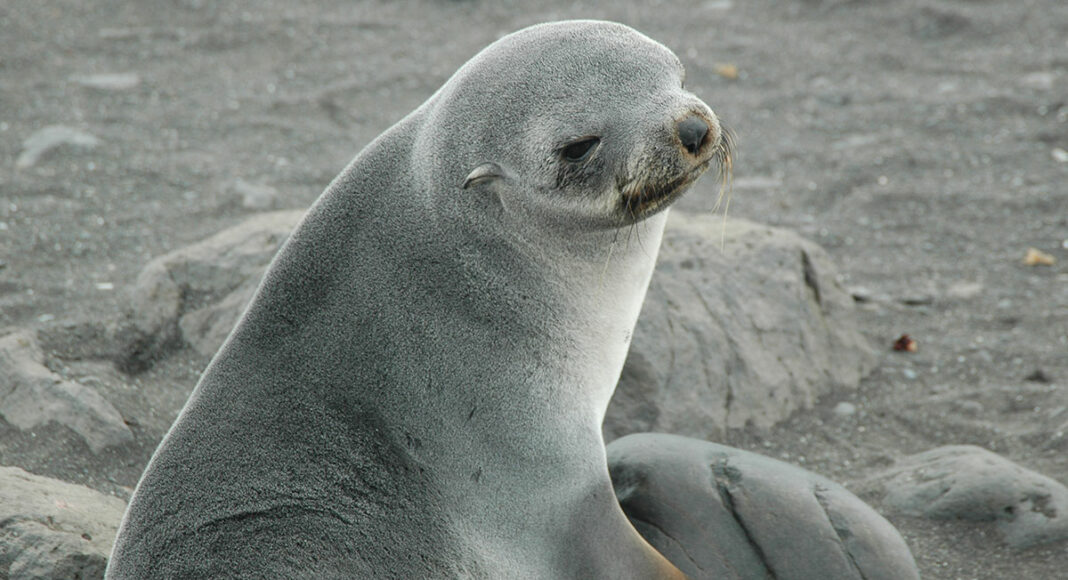The spirit of Antarctic collaboration is alive in Santa Cruz.
On Jan. 13, the National Science Foundation announced that it would be awarding a grant of $152,929 to Luis Huckstadt, a marine ecologist at UCSC. The grant will be used to create an open database of all oceanographic data about the Southern Ocean—things like ocean temperature, salt concentrations, and light—collected by marine mammals and birds from the past few decades.
“The idea is to make the environmental data that penguins, seals, and people have been collecting in Antarctica since the ’90s available for [scientists] to use in their research,” Huckstadt says.
Wait, what? Scientist seals?
Let me explain. In the Southern Ocean, where dense layers of ice cover the sea surface for most of the year, collecting basic information about the ocean can be almost “impossible,” Huckstadt says. But areas that are difficult to reach for humans are the everyday jaunts of some animals. By attaching so-called “animal-borne instruments,” or ABIs, to these ocean dwellers, scientists can collect data about the Southern Ocean that would otherwise be out of their reach.
Most of this data, however, is collected by scientists for specific research projects and ends up locked away in lab computers scattered across the globe. Huckstadt is working with scientists in Australia and France to gather this information in a database that all scientists can access.
To do this, Huckstadt is relying on what he calls “the collaborative spirit” of Antarctica. Scientists working on the planet’s most inhospitable continent tend to band together, says Huckstadt, who has now visited Antarctica around 10 times.
“You just reach out to other scientists and tell them: ‘Hey, we need your data to look into this question,’ and people are very willing to share. It’s all about the advancement of science,” Huckstadt says.
That’s a good thing, considering how difficult it can be to access these areas, let alone attach a gadget to a wild animal. Seals may look cute, but researchers know to take them seriously.
“These are dangerous animals,” Huckstadt says. “They’re big, with big teeth, and they can kill you.”
To attach even one ABI, scientists must first catch and sedate their target. Every capture is a precious opportunity to learn more about these creatures, so scientists first collect physical data before gluing the ABI to the animal’s fur or feathers, usually between the shoulder blades.
ABIs can stay attached to an Antarctic marine animal for up to a year. Once they fall off, scientists can pick them up and extract the data.
Already, ABIs have allowed Antarctic researchers to question basic assumptions about the Southern Ocean. Between 2005 and 2009, researchers were puzzled by ABI data showing that seals were diving below the seafloor. By tracking these seals, scientists were able to discover that the seafloor was at least 200 meters further down than previously thought.
Huckstadt says this discovery shows how little baseline information we have about the Southern Ocean. He hopes that the database can help answer some of these questions while helping scientists understand how global warming is changing the Southern Ocean.
“We know that we have a huge effect on our planet, but we haven’t been able to understand the magnitude of these changes,” Huckstadt says, adding that polar regions are changing faster than almost any other environment on Earth due to climate change. “By looking at historical data that seals have been collecting for decades, we can potentially identify how much warming is happening and how fast.”
Over the next few years, Huckstadt and his team will create and test the database. Once it’s done, the team will also use the database to create material for a K-12 curriculum that educators in Santa Cruz and across the United States can use to teach their students about the Southern Ocean.
“For everyone working in marine biology, going to Antarctica is a dream,” Huckstadt says.
Through this grant, Huckstadt may bring some of that dream to other scientists and students around the world.













